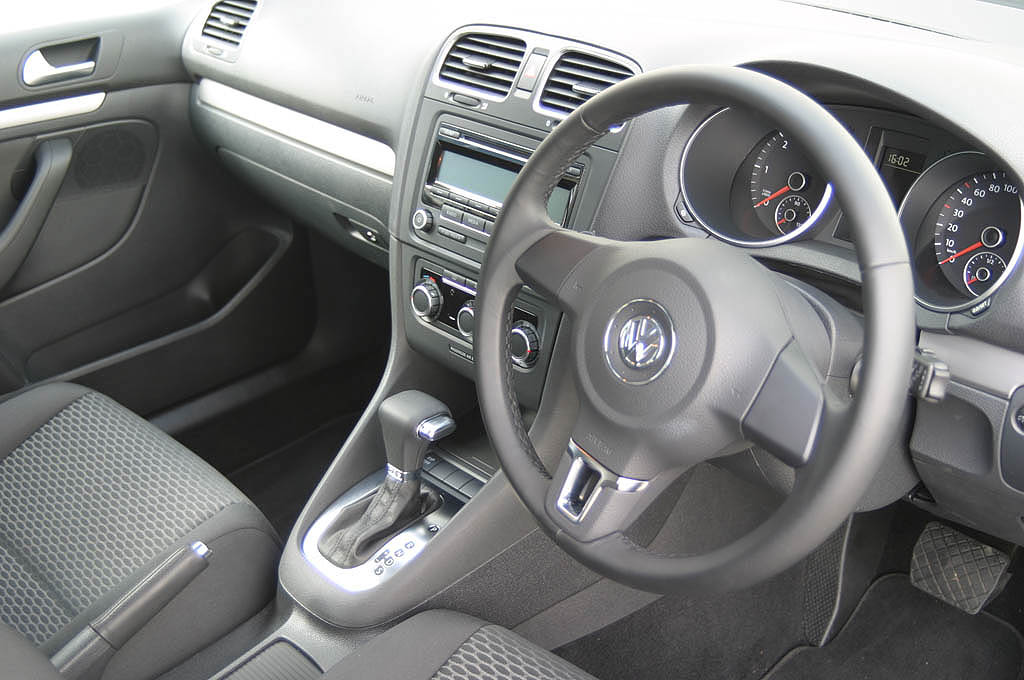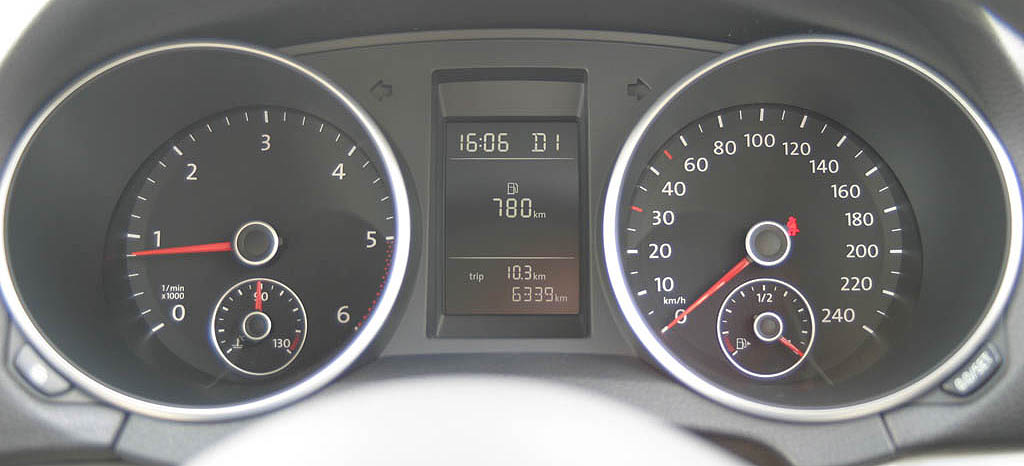Volkswagen Golf Variant 2010 new car review
The stretched Golf will cater to anyone who requires a larger cargo capacity and hybrid-rivalling fuel economy.

What happens when you grab the back of a VW Golf and take two steps backwards? It’s a riddle that Volkswagen has recently solved with its new MkVI Golf Variant.
- Excellent fuel economy
- High handling abilities
- Large and convenient cargo area
- Could have done more with the rear styling
- Hard seats
- Only one trim level available in NZ
The stretched Golf is no joke and is set to cater to fleet buyers and anyone who requires a larger cargo capacity and hybrid-rivalling fuel economy. The current Golf has been heaped with praise in its hatchback form but is the wagon set to follow suit. We spent some time inside the Golf Variant’s expanded interior to find out more.
Inside and out
The dimensions of the Golf Variant don’t differ from the standard hatch as much as you’d initially assume. Obviously there is an increase in the length by 44cm but all other measurements remain exactly the same, including the wheelbase.
At the front very little distinguishes the Variant from the hatchback with both sharing a black plastic grille and gaping low air-intake in the bumper. In profile, there’s no hiding the Variant’s extra length that is concentrated in the rear overhang and highlighted by integrated roof rails. Rear styling is unique to the Variant and consists of slightly awkward taillights and a wide-opening tailgate that when lifted creates a generous loading aperture.
The Golf Variant is available in NZ with only one trim level: the lower-spec ‘Trendline’. While the only exterior evidence of this basic fit-out is the hub-capped 16-inch wheels, the cabin is fairly Spartan. However, the Golf is known for its high quality interior and even in its most simple form remains impressive.
Soft touch plastics integrate with subtle aluminium and chrome highlights to create an excellent overall surface quality. A thick leather-wrapped steering wheel and large easily read instruments help make driving a pleasurable experience.
The central control stack is basic and logically laid out with separate stereo and climate controls. The seats are finished in a dark durable-looking cloth and although supportive may not prove too comfortable on longer journeys. Head and legroom is ample all around with rear passengers receiving slightly raised seating and their own air vents.
For a basic model, the Variant boasts an impressive equipment list including a CD stereo, climate air conditioning, power windows (front and back), daytime running lights, heated mirrors, remote central door locking and an alarm system.
The Variant’s reason for being lies in its luggage compartment and capacity is a useful 505 litres. Drop down the 60:40 split rear bench seat and cargo volume increases to 1,550 litres. That’s a significant increase over the hatchback’s cargo capacity of 350l and 1305l respectively.
With the rear seat folded down, there is a 1.7m long continuous flat cargo area to the driver’s backrest, perfect for longer items. There is also additional storage space under the cargo floor and in the side panelling. Added convenience comes from tie-down holes, a partitioning net, 12-volt socket and bag hooks.
On the road
In terms of engine options the Variant comes with two units on offer, a 1.4 litre TSI petrol engine and, as tested, a 1.6 litre TDI diesel mill. The diesel engine outputs 77kW of power and 350Nm of torque from 1500rpm. While it’s no rocket the diesel motor is willing and strong enough to mask the extra 120kg the Variant carries over its hatchback siblings. The diesel engine can be noisy on initial acceleration or when under heavy load, but while cruising is reasonably refined.
This twin-clutch transmission makes for smooth rapid shifts and effortlessly extracts all available power. There is a sports mode for more spirited driving and a sequential shift option for manual changes. The clever 7-speed DSG box helps the Variant achieve a very frugal fuel economy of just 4.5L/100km on the combined cycle.
In terms of dynamics, the Variant drives very similarly to the hatch with a nimble handling ability and strong grip through the front driving wheels. It feels equally at home motorway cruising as navigating windy B-roads and regular driving uncovers little dynamic disadvantage from the vehicle’s extra length.
The ride is on the firm side but not uncomfortable and the suspension set up allows it fluidity when changing direction. The electro-mechanical steering is well weighted and very direct which instills driver confidence. Very little road or wind noise enters the cabin and the sound insulation does well to keep out most sounds from the diesel motor.
When it comes to safety the Golf Wagon doesn’t include the driver’s knee airbag found on the hatch models but does have front, side and curtain bags. A long list of electronic safety aides are also included with ABS, hill hold assist and a full electronic stability programme all standard. There’s also more passive safety touches like three-point belts for all passengers, hazard warning lights under full braking and front and rear crumple zones.
Overall
The bottom line is that the Golf Variant is a very good car in the same way all the current Golf range is. The combination of a large cargo space and exceptional fuel economy will make this model an excellent working vehicle for corporate customers. But it would work equally well as a family hauler thanks to its practicalities, spaciousness and high safety credentials.
Despite the conservative styling, the driving experience can be fairly lively and for a base model, it never feels bare bones. Whatever the reasons for requiring a small wagon the Variant retains all the Golf’s strengths and introduces no significant new weaknesses.
Note: this was reviewed as a new vehicle.
Image gallery
Also consider





